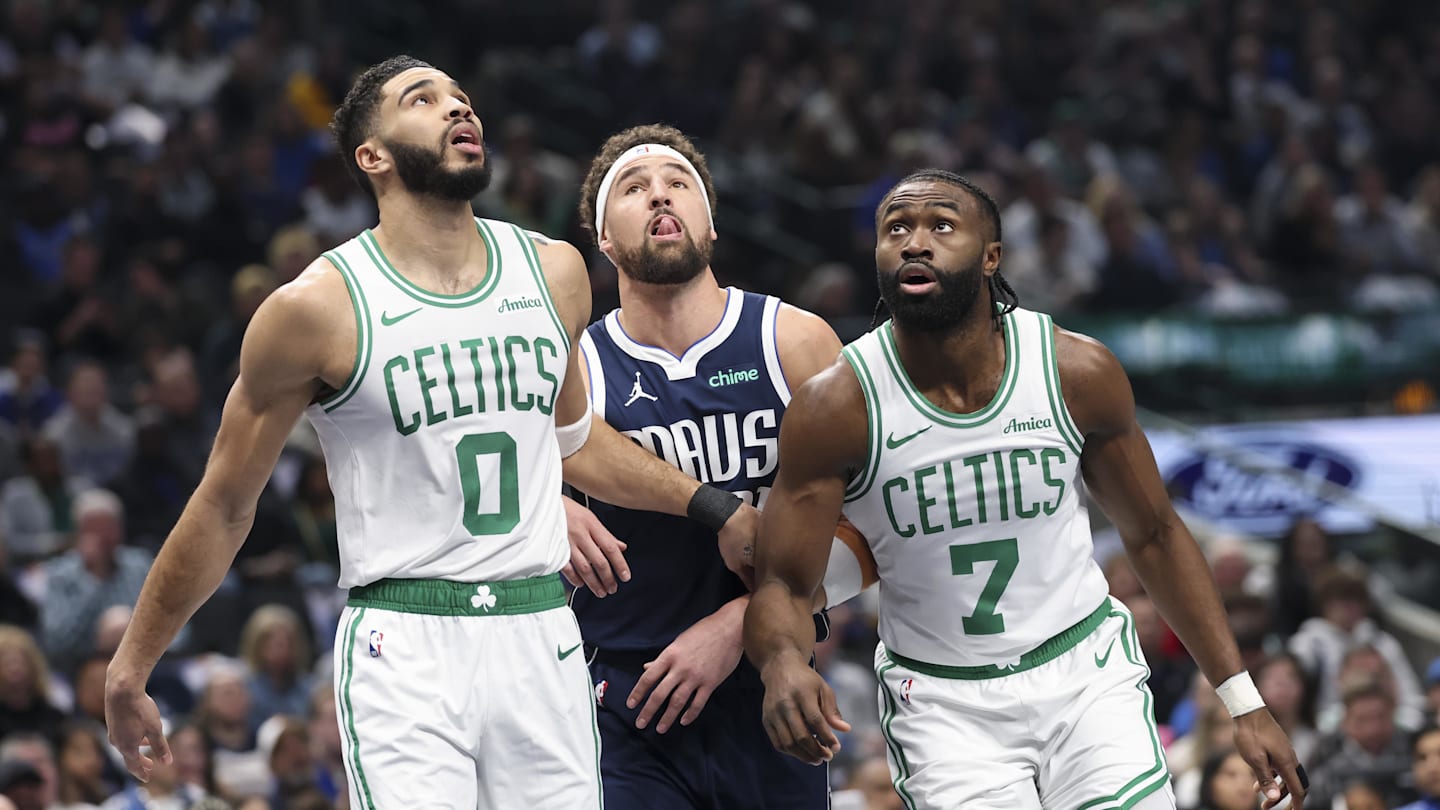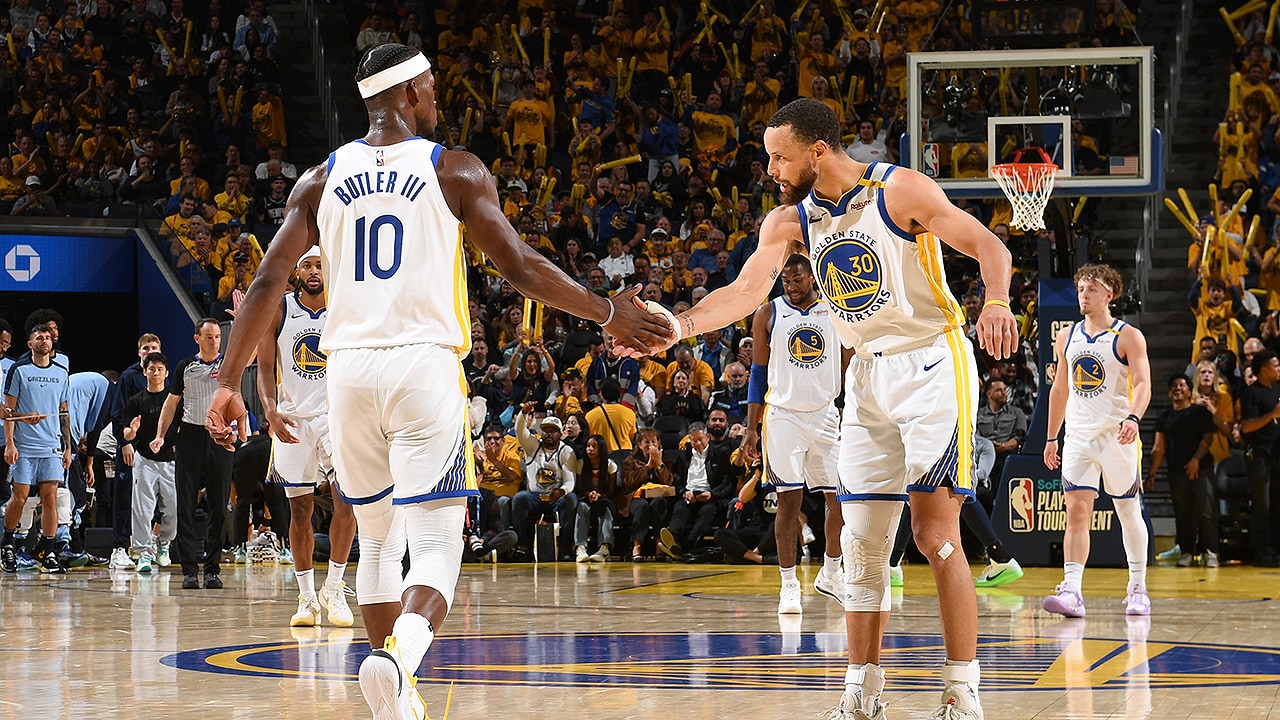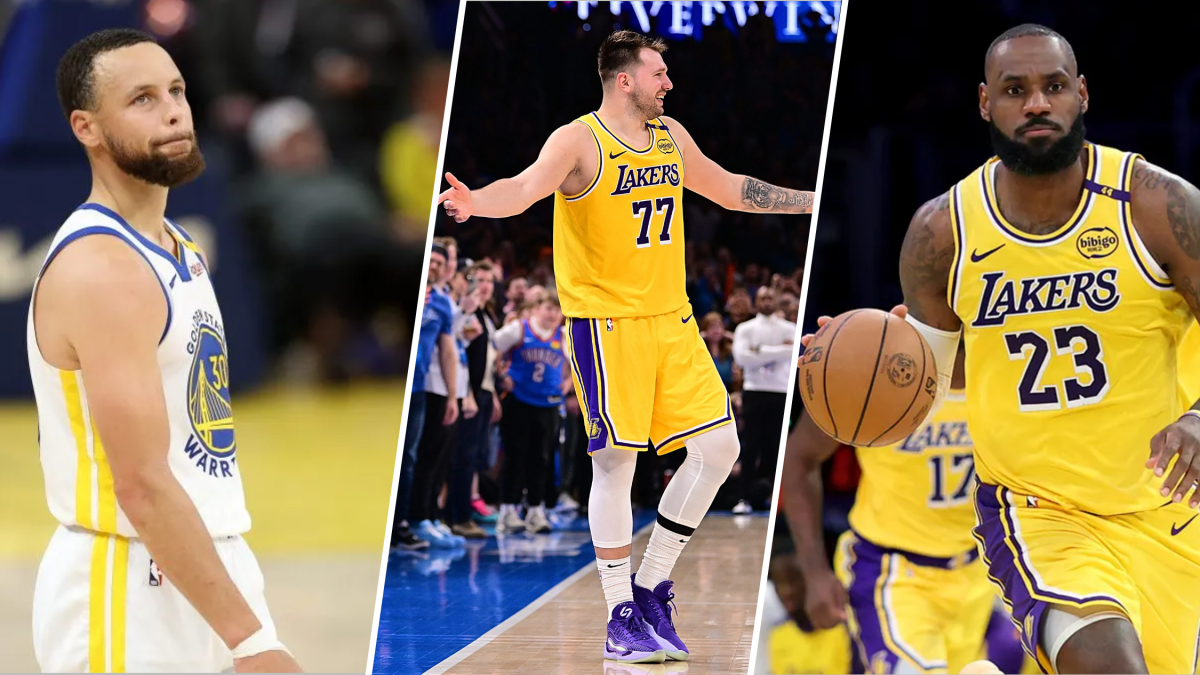For all the grousing of the long 82-game NBA regular season, it does make for a significant sample size. Habits developed over the six-month slog of basketball are telling as far as trying to figure out what a team’s identity is. Teams tell us who they are—not in the span of one night, or even one week, or even one month. But over the course of 82 games, nearly 4,000 minutes of basketball, trends emerge that help define who the contenders are and what their possible weak points could be. It also helps expose the pretenders, teams soaring above their talent level thanks to statistical anomalies.
It is not always the case that these trends carry over to postseason play. Anything can happen in the playoff gauntlet. No amount of analysis could have led to the conclusion that the 73–9 Golden State Warriors would lose three straight games and blow a 3–1 lead in the NBA Finals. But most of the time, trends that can be observed over the course of a regular season, backed up by 82 games’ worth of evidence, are indicative of playoff performance. There’s a reason the NBA postseason is usually chalk as they come; only two champions in league history have been lower than the three-seed.
The 2024–25 season provided us with plenty of data points for such trends. Here are five that are worth keeping an eye on as the playoffs approach, trends that prove very consequential as games tighten and every single point counts.
The Boston Celtics largely looked the part of a defending champion during the regular season, winning over 60 games for a second straight year while ranking in the top five for both offensive and defensive rating. That they didn’t miss a beat even with Kristaps Porzingis, Jrue Holiday and Jaylen Brown all missing numerous games makes it all the more impressive the C’s didn’t succumb to any sort of championship hangover in regular-season play.
However, once Porzingis returned from offseason surgery, an odd trend began to emerge: The Celtics’ best starting lineup from their title run last season wasn’t clicking. Like, at all.
The starting five of Jayson Tatum, Derrick White, Brown, Holiday and Porzingis was Boston’s most-used lineup during the 2023–24 regular season, boasting a net rating of 11.0 in 623 minutes across 37 games. This past season, that same lineup is at exactly even, with a net rating of 0.0 in 357 minutes played. In other words, with their five best players on the floor, the Celtics went from dominating opponents to battling to a draw from one year to another.
There are plenty of reasons this could be the case, and not all of them are indicative of future performance. Porzingis needed a pretty long ramp-up period to get back into playing shape after ankle surgery and then missed more time with a mystery illness. Holiday played through a shoulder injury around when Porzingis returned early in the year. The differential from the three-point line is completely reversed, which is largely a matter of shooting luck. That lineup shot 39.3% from deep while holding opponents to 36.7% last season, but this year they’re shooting only 36.3% while opposing shooters are draining 41.7% of their tries from beyond the arc.
Some will look at that data and context and dismiss it as a smaller sample size than last year, complicated by injury recovery and poor shooting luck. Others will see a potential weak spot in an otherwise very strong case that the Celtics will repeat—that the team’s most talented lineup, which should also be its most often-used in the playoffs, can be contained by opposing defenses. Either way, how that lineup performs will be worth watching as the postseason tips off, because if Boston’s top players can’t click, the Celtics will be hard-pressed to keep up with the other title contenders.

Jimmy Butler has meshed pretty well with the Warriors since arriving in the Bay via trade in early February. Golden State went 23–8 after acquiring Butler, failing to avoid the play-in tournament but successfully moving far enough up the West standings to earn the No. 7 seed and giving Steph Curry a half-decent shot at another deep playoff run. For his part, Butler has been settling in on both ends of the court, averaging 17.4 points per game after the All-Star break and defending well enough that the team boasts an elite 106.0 defensive rating in his 32.7 minutes per game on the court.
Butler’s defensive fit was always cleaner than on the other end, though. He isn’t a very dangerous shooter, shooting only 40.4% on his spot-up attempts this year, and needs the ball to make an impact. Normally he’d get it—but when Curry is on the court, everybody defers to him. So Butler has had to find his offensive production through different manners than he might be used to.
Which gives way to an interesting, and possibly concerning, trend for Butler in a Warriors uniform. He gets a lot of his points from the free throw line. That shouldn’t be terribly surprising given Butler is one of the league’s best foul-drawers whose pump-fake is second only to DeMar DeRozan, but he usually balances scoring from the charity stripe with making shots pretty equally. In his best scoring season, Butler averaged 23.9 points with 7.7 free throw makes per game.
With Golden State, however, the ratio is way off. Butler is earning 6.4 points from the free throw line with the Dubs after the All-Star break (about when he began to settle in with GSW), over 30% of his 17.4 points per game output. He averages the fewest ppg, by far, among players with at least five free throws made per game in that time frame. Only seven other players average more free throw makes per game than Butler and all average at least 25 points per game (except Joel Embiid, who played in two games post-ASB before getting shut down). Butler’s closest comparison relative to how many of his points come at the charity stripe is the Indiana Pacers’ Bennedict Mathurin, who averages 4.8 free throw makes to 14.7 points per contest.
Butler is great at earning trips to the line. And for him, that doesn’t change with playoff basketball; he averages 5.7 free throws made per game in his playoff career. But the fact of the matter is that the whistle gets tighter in postseason play. Fewer fouls are called. If Butler can’t figure out a way to offset that with better play offensively, the Warriors might struggle to produce in non-Curry minutes. Which could prove mighty problematic indeed against an elite Houston Rockets defense.
The Thunder won 68 games this season, an incredible feat that puts them in rare company alongside some of the best teams ever. While MVP candidate Shai Gilgeous-Alexander’s silky smooth scoring was a pillar of OKC’s success, the collective defense on display every night by the Thunder was the foundation of their winning ways. The roster’s waves of sturdy individual defenders who are completely in sync on the court drove the Thunder to a 106.6 defensive rating, by far the best in the NBA.
If you can believe it, the Thunder actually cooled off a bit on that end of the court, too. They started the season with downright amazing defense, holding opponents to such horrific shooting numbers it was fair to wonder if we were all watching one of the best defenses in basketball history. Before the All-Star break, OKC boasted a defensive rating of 104.5, the best in the league by a wide margin. After the ASB, the Thunder’s net rating dropped to “only” 110.4, which ranked fifth in the NBA in that span.
There are many factors that help explain why, but the most interesting and potentially most relevant for OKC’s playoff chances? How well opponents shot on open three-point looks.
Before the All-Star break, the Thunder held opposing shooters to 35.3% shooting on “wide-open” shots, defined by the NBA as shots with no defender within six feet of the shooter. Over an entire season that would tie for the sixth-best three-point defense in the NBA this year, and below the league average of 36%. After the All-Star break, though, teams made 40.4% of their open treys against OKC. It didn’t change a ton in the grand scheme, as the Thunder continued to win at the same clip they did before opposing players started sinking open shots. But the defense went from “all-time great” to merely amazing; the Thunder recorded only one game holding an opponent to under 100 points after the break, and had 18 such games before.
Those numbers don’t indicate any fatal flaw in OKC’s defense. In fact, the Thunder’s defensive acumen is as good as advertised no matter what stats you pull up. But even their fierce cadre of defenders can’t do anything to make opponents miss open shots. They just have to hope. It worked out great in the first half of the season, and not so great in the second. Where that number settles when the playoffs begin will play a big role in determining whether the Thunder are unstoppable juggernauts or “just” heavy title favorites.

Nikola Jokic turned in another majestic season in 2024–25, becoming the first center and third player ever to average a triple double over the course of a full season to the tune of 29.6 points, 12.7 rebounds and 10.2 assists per game. It seems outlandish to say, given the Serbian big man has won three MVPs already, but this was his best season yet. Unfortunately for Denver, such great play has exposed just how underwhelming the rest of the roster is when Jokic isn’t on the floor.
It is an eternal truth in basketball that a team is worse when a superstar player is off the floor. No matter how talented anybody else might be, no matter whether it’s a regular-season game or a Game 7 in the Finals, an NBA team considers it a success if it can tread water while the star has to rest on the bench. But most fail in that endeavor and are outscored by opponents without their superstar. Then, when the best player is back out there, the ship is steadied.
To that point, it isn’t supposed to be a surprise that advanced stats detailing how the Nuggets play without Jokic are not flattering. In fact, they rarely have been during his career in Denver, which is both a reflection of his greatness and the Nuggets’ struggles in providing him with a consistent No. 2 option. But the fact that it is not a new problem doesn’t change that it will hinder Denver’s championship hopes.
Per Cleaning The Glass, the Nuggets play like a 65-win team when Jokic is on the floor. When he’s sitting? They play like a 19-win team. Denver scores 22.4 points per 100 possessions more when he’s controlling the flow of the offense; Jokic is in the 100th percentile in both those stats. The team’s shooting percentage shoots up by 8.5% with Jokic out there. Looking at it more broadly and simply, the Serbian big man has helped the Nuggets outscore their opponents by a total of 594 points this season while on the floor—second only to fellow MVP hopeful SGA in OKC.
Even with his remarkable endurance, Jokic cannot play 48 minutes of every playoff game. Denver has to find a way to survive the absence of the greatness displayed by the stats above.
The Cavaliers had an amazing season come a bit out of nowhere. Kenny Atkinson replaced J.B. Bickerstaff as head coach, but the roster from 2023–24’s 48-win team remained largely intact. The Cavs ripped off a 64-win season this year, earned the No. 1 seed in the East and set themselves up as legitimate threats to unseat the Celtics as NBA champions.
How did this happen? A grand influx of factors, from better health to Evan Mobley’s emergence as a creator on offense to an unexpected Ty Jerome breakout season. But Cleveland has been especially buoyed by hot shooting from beyond the arc up and down the roster, a strong feature of the team’s two 15-game win streaks this year and something that never really faded throughout.
As a team, the Cavs shot 38.3% from three-point land, which ranks second in the NBA behind the Milwaukee Bucks (and Cleveland took nearly five more attempts per game). They managed such a high percentage of shots made thanks to career shooting years from nearly every rotation player. In fact, of the nine main rotation players who averaged at least 19 minutes per game for Cleveland entering the playoffs (excluding Jarrett Allen, a non-shooter), seven shot better than their career shooting percentage from three-point land.
|
Player |
Career 3P% |
2024–25 3P% |
|---|---|---|
|
Donovan Mitchell |
36.6% |
36.8% |
|
Darius Garland |
38.4% |
40.1% |
|
Evan Mobley |
26.5% |
37.0% |
|
Max Strus |
36.5% |
38.6% |
|
DeAndre Hunter |
36.3% |
40.5% |
|
Ty Jerome |
35.2% |
43.9% |
|
Isaac Okoro |
34.7% |
37.1% |
As you can see, some of those improvements are marginal, and in the case of the younger players could simply be a reflection of their development as shooters. But it is undeniable the Cavaliers have been blessed with great shooting luck this season. Will it carry over to postseason play? Or will Cleveland have to fight through its first prolonged shooting slump of the year at the most inopportune time? It’s impossible to predict, but definitely something to watch.


